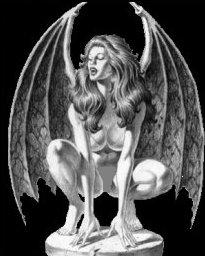Wheat Ridge Cemetery Seeks To Liven Up
For more than a century, folks have gone to Olinger Crown Hill Cemetery to mourn endings. But now, the 260-acre, 103-year-old graveyard is working to reimagine itself as something more than a spot for solemn rituals. Crown Hill is pushing into the territory of galleries and performance halls, scheduling concerts and art exhibitions in hopes of engaging more routinely with the community, said general manager Kevin Wolfe. "People come to cemeteries, and they are always looking down," he said. But Wolfe wants them to look around, to experience the music and the art, the plants, the history and the culture. Crown Hill, 7777 W. 29th Ave., has laid careful plans for its transformation, as have some competitors. Cemeteries across the country are increasingly broadening their attractions beyond disposal of bodies to draw people past the wrought-iron gates. For example, Denver's historic Fairmount Cemetery, 430 S. Quebec St., has long been hailed for its fine collection of old roses and trees but also hosts "First Friday" social events, summer potlucks celebrating loved ones buried there and concerts that pay tribute to Colorado history. "This is part of the way in which cemeteries have been sprucing themselves up," said Marilyn Yalom, who wrote "The American Resting Place," a history of 400 years of cemeteries in the United States. "It's a contemporary movement that doesn't have a counterpart in the past." Commerce, Yalom said, is behind some of the evolution. Cemetery directors want to bring people onto the grounds, to introduce them to the place and make it feel comfortable instead of forbidding. But the tranformation, too, is tied to a blossoming realization that cemeteries are rich with history, that they can chronicle a community's march through the centuries. Last week, Crown Hill hosted an exhibit of lush and life-affirming landscape paintings by New Mexico artist Ed Sandoval. Garden displays also are important. The grounds were recently certified as an arboretum, and the cemetery now has a garden club. The just-completed Our Lady of Guadalupe garden anchors one part of the cemetery. Another new area is the "Asia Paradise," the only feng-shui-designed burial site in the state, complete with headstones topped with pagodalike designs. Wolfe even encourages couples to tie the knot on the cemetery grounds. So far, six have. The push to make the cemetery feel more like an ordinary part of the community began a few years ago and is gaining momentum. Crown Hill now urges people to tour the grounds and examine works by the Mexican artist and architect Dionicio Rodriguez — his only pieces in the state are scattered throughout the grounds. There's a unique stained-glass installation dense with Masonic references, including the "Eye of Providence" that is familiar because it's also on the $1 bill. The Wheat Ridge cemetery holds a plot of Spanish-American War and Civil War gravestones. And there's a local celebrity factor to graveyard tours. Adolph Coors? You can't miss his obelisk grave, a smaller version of the Washington Monument, or the final resting place for George Tebeau, the father of Colorado baseball. Just look for the gravestone emblazoned with a baseball player. The grounds support 1,700 trees, representing 72 species, including 19 Colorado state-champion trees. "Cemeteries do make you ask the big questions, and I think that is all to the good, particularly in a society that manages to fail to ask truly big questions and does so much to deny death," Yalom said. "People don't die in their homes anymore. We don't lay out the bodies as we did in the past. There are so many ways in which we can think of death belonging to other people. I think a closer relationship to cemeteries is a good thing."
Garden displays also are important. The grounds were recently certified as an arboretum, and the cemetery now has a garden club. The just-completed Our Lady of Guadalupe garden anchors one part of the cemetery. Another new area is the "Asia Paradise," the only feng-shui-designed burial site in the state, complete with headstones topped with pagodalike designs. Wolfe even encourages couples to tie the knot on the cemetery grounds. So far, six have. The push to make the cemetery feel more like an ordinary part of the community began a few years ago and is gaining momentum. Crown Hill now urges people to tour the grounds and examine works by the Mexican artist and architect Dionicio Rodriguez — his only pieces in the state are scattered throughout the grounds. There's a unique stained-glass installation dense with Masonic references, including the "Eye of Providence" that is familiar because it's also on the $1 bill. The Wheat Ridge cemetery holds a plot of Spanish-American War and Civil War gravestones. And there's a local celebrity factor to graveyard tours. Adolph Coors? You can't miss his obelisk grave, a smaller version of the Washington Monument, or the final resting place for George Tebeau, the father of Colorado baseball. Just look for the gravestone emblazoned with a baseball player. The grounds support 1,700 trees, representing 72 species, including 19 Colorado state-champion trees. "Cemeteries do make you ask the big questions, and I think that is all to the good, particularly in a society that manages to fail to ask truly big questions and does so much to deny death," Yalom said. "People don't die in their homes anymore. We don't lay out the bodies as we did in the past. There are so many ways in which we can think of death belonging to other people. I think a closer relationship to cemeteries is a good thing."
 Garden displays also are important. The grounds were recently certified as an arboretum, and the cemetery now has a garden club. The just-completed Our Lady of Guadalupe garden anchors one part of the cemetery. Another new area is the "Asia Paradise," the only feng-shui-designed burial site in the state, complete with headstones topped with pagodalike designs. Wolfe even encourages couples to tie the knot on the cemetery grounds. So far, six have. The push to make the cemetery feel more like an ordinary part of the community began a few years ago and is gaining momentum. Crown Hill now urges people to tour the grounds and examine works by the Mexican artist and architect Dionicio Rodriguez — his only pieces in the state are scattered throughout the grounds. There's a unique stained-glass installation dense with Masonic references, including the "Eye of Providence" that is familiar because it's also on the $1 bill. The Wheat Ridge cemetery holds a plot of Spanish-American War and Civil War gravestones. And there's a local celebrity factor to graveyard tours. Adolph Coors? You can't miss his obelisk grave, a smaller version of the Washington Monument, or the final resting place for George Tebeau, the father of Colorado baseball. Just look for the gravestone emblazoned with a baseball player. The grounds support 1,700 trees, representing 72 species, including 19 Colorado state-champion trees. "Cemeteries do make you ask the big questions, and I think that is all to the good, particularly in a society that manages to fail to ask truly big questions and does so much to deny death," Yalom said. "People don't die in their homes anymore. We don't lay out the bodies as we did in the past. There are so many ways in which we can think of death belonging to other people. I think a closer relationship to cemeteries is a good thing."
Garden displays also are important. The grounds were recently certified as an arboretum, and the cemetery now has a garden club. The just-completed Our Lady of Guadalupe garden anchors one part of the cemetery. Another new area is the "Asia Paradise," the only feng-shui-designed burial site in the state, complete with headstones topped with pagodalike designs. Wolfe even encourages couples to tie the knot on the cemetery grounds. So far, six have. The push to make the cemetery feel more like an ordinary part of the community began a few years ago and is gaining momentum. Crown Hill now urges people to tour the grounds and examine works by the Mexican artist and architect Dionicio Rodriguez — his only pieces in the state are scattered throughout the grounds. There's a unique stained-glass installation dense with Masonic references, including the "Eye of Providence" that is familiar because it's also on the $1 bill. The Wheat Ridge cemetery holds a plot of Spanish-American War and Civil War gravestones. And there's a local celebrity factor to graveyard tours. Adolph Coors? You can't miss his obelisk grave, a smaller version of the Washington Monument, or the final resting place for George Tebeau, the father of Colorado baseball. Just look for the gravestone emblazoned with a baseball player. The grounds support 1,700 trees, representing 72 species, including 19 Colorado state-champion trees. "Cemeteries do make you ask the big questions, and I think that is all to the good, particularly in a society that manages to fail to ask truly big questions and does so much to deny death," Yalom said. "People don't die in their homes anymore. We don't lay out the bodies as we did in the past. There are so many ways in which we can think of death belonging to other people. I think a closer relationship to cemeteries is a good thing."

















<< Home